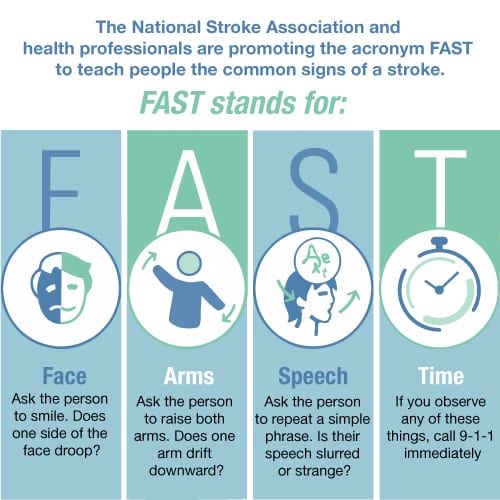Stroke is not a disease that’s exclusive to the elderly. Fans were shocked and saddened when Luke Perry, former teen heartthrob and star of Beverly Hills, 90210 and Riverdale, died of a massive stroke at 52. And sadly, Perry’s death is reflective of a trend that health professionals have been noting for years: an increase in stroke rates among people around Perry’s age and even younger.
Consider these statistics:
- The National Stroke Association reported a 44 percent increase in the number of young Americans under age 45 hospitalized due to stroke over the past decade.
- Stroke rates among people age 35 to 39 more than doubled between 1995 and 2014 and increased in groups up to age 55, according to a 2016 study of New Jersey hospitalizations reported in the Journal of the American Heart Association.
- A 2017 study in JAMA Neurology found increases in stroke in people ages 35 to 44 from 2003 to 2012, with a 42 percent increase in men and a 30 percent increase in women.
“Stroke is not a disease that’s exclusive to the elderly,” says Ali Alaraj, MD, a neurosurgeon with UI Health. “Unfortunately, we’re seeing more young patients.”
A stroke occurs when blood flow to an area of the brain is cut off, either because it is blocked by a clot or because a blood vessel bursts or bleeds. When this takes place, brain cells are deprived of oxygen and begin to die. When those cells die, abilities such as arm or leg movement, speech, vision and memory are diminished. Strokes can strike at any age, even in children and young adults.
It is not entirely clear why strokes are increasing in young people, says Michael Chen, MD, a neurologist with Rush University Medical Center. The higher rates may be tied to an increase in other risk factors among young people, he says, including high blood pressure, smoking, obesity, poor diet, physical inactivity and high cholesterol.
Another risk factor among young people is the use of drugs, Alaraj adds. “[Cocaine and marijuana] can increase blood pressure in a way that’s out of control and causes bleeding in the brain.”
Stroke is not a disease that’s exclusive to the elderly.”
Alaraj says the best way to avoid a stroke is to live a heart-healthy lifestyle, control risk factors and see your primary physician at least once a year to track blood pressure, sugar and cholesterol levels, as well as other important indicators. “The medical surveillance you do with your primary physician is essential,” he says.
If a stroke occurs, time is of the essence in seeking treatment. “You should act fast, that’s the most important message to get out there,” Alaraj says.
Rapid treatment can minimize long-term effects of a stroke. “If stroke is treated immediately, the patient has less chance of being disabled by stroke,” he says. “The faster we get to treat stroke, the better the chances of good recovery.”
“Blood to the brain is interrupted by a stroke, but that part of the brain is not dead immediately,” Alaraj explains. “If a patient can get to the ER immediately, we can give the patient an IV medication that will dissolve the clot, reopen the blood vessel and establish the normal blood flow to the brain.”
Another treatment for larger clots is mechanical thrombectomy in which blood flow to the brain is restored after the clot is removed via a stent or suction catheters.
“It is highly effective,” Chen says. “The sooner we can remove the clot, the more brain we can save.”
Recognize the Symptoms of a Stroke













